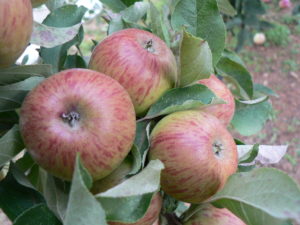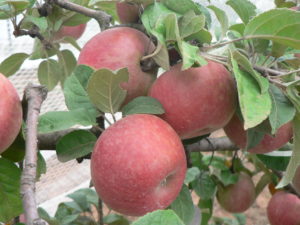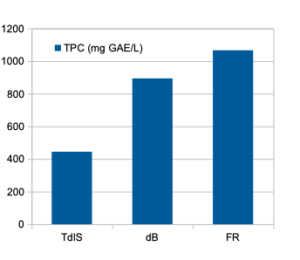As more is learnt above the French cidre/cider varieties some early information might help with evaluating them and considering how they might fit into the Australian cider scene.
English cider varieties are traditionally grouped into four classes: sweet, bittersweet, sharp and bittersharp. Naturally the French have varieties which come into these general classes also but they also have varieties which occupy more outlying classes, namely higher acid level types and higher tannic/phenolic types. This latter class is described as ‘amere’, translating as bitter. Australia appears to have two French varieties in this class, Frequin Rouge and de Boutteville.
Each has a degree of acidity from malic acid but their total phenolic levels far exceed the accepted levels for the bittersweet and bittersharp classes. For this reason they are unlikely to find a role as varietal ciders and more likely to be used as part of a blend. Incorporation of a proportion of juice from these varieties can be used to lift the average tannin level of a cider apple blend and hence move the blend further towards the traditional style. Similarly a proportion of juice could be used to introduce tannin into a cider being produced from dessert apples.
The level of tannin in the juice from these two varieties can be seen in the chart below. The bar on the left is the TPC (total phenolic compounds) for a conventional French bittersweet – Tardive de la Sarthe – followed by de Boutteville and Frequin Rouge.
The results above are based on analyses of 2022 fruit and it is hoped to re-run these analyses with fruit maturing in 2023. Whilst they are indicative of what can be expected it is desirable to have results from two or more seasons.
Early indications are that de Boutteville is also likely to have higher sugar levels than a number of other cider varieties. This may or may not be an advantage in relation to the cider being planned.



